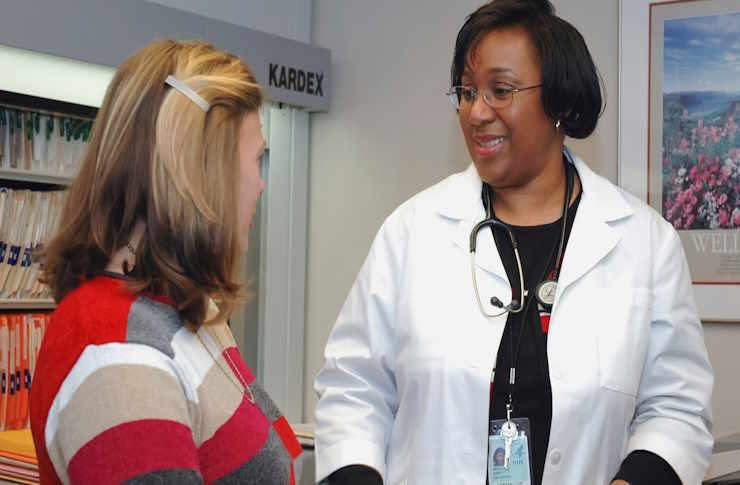Benefits and Impact of Remote Medical Receptionists on US Healthcare Communication 2025
In 2025, remote medical receptionists are changing how US healthcare providers manage communication and administration. This article examines how remote reception solutions improve patient access, streamline operations, and why practices adopt them to boost service quality and efficiency.

Understanding the Role of Remote Medical Receptionists in Healthcare
Remote medical receptionists perform the essential duties traditionally managed by front-desk staff, but from offsite locations. Using secure digital technologies, these professionals handle tasks including answering patient calls, scheduling appointments, managing electronic health records, and facilitating insurance verifications. Their work bridges the gap between patients and providers, enabling efficient communication without the need for physical presence in medical offices.
Advances in cloud-based platforms and HIPAA-compliant telecommunications ensure that remote receptionists can perform these sensitive tasks while safeguarding patient information. This digital shift aligns with the growing transformation of the healthcare sector toward virtual and hybrid operational models.
Enhancing Patient Communication Through 24/7 Availability
One of the most notable benefits offered by remote medical receptionists is round-the-clock availability. Unlike traditional office hours limited to weekdays, remote receptionists can operate during evenings, weekends, and holidays, providing continuous access for patients to schedule appointments, ask questions, and confirm details.
This 24/7 presence addresses a critical challenge in healthcare communication — missed calls and unanswered inquiries. Studies indicate that missed patient calls can lead to lost revenue and diminished patient trust. By ensuring all calls are answered promptly, remote receptionists reduce appointment no-shows and improve overall patient satisfaction.
Driving Cost-Effective Staffing and Operational Flexibility
Healthcare practices benefit from remote medical receptionists’ cost efficiency. Hiring remote staff reduces expenses associated with physical office space, equipment, and full-time employment benefits. Practices can scale receptionist services based on demand, adjusting coverage during peak periods or reducing it during slower times without the financial strain of permanent on-site staff.
This model is particularly advantageous for small to mid-sized practices seeking to optimize resources while maintaining high-quality patient communication. The scalable nature of remote staffing supports dynamic operational needs and enables better financial management.
Streamlining Administrative Tasks with Advanced Technologies
Remote medical receptionists utilize sophisticated, secure systems to manage various administrative duties:
- Electronic Health Records (EHR) management
- Appointment scheduling and coordination
- Insurance verification and prior authorization
- Patient inquiries and data updates
Cloud-based platforms allow seamless integration with a practice’s existing infrastructure. This supports faster patient onboarding, reduces denied insurance claims, and promotes a more efficient revenue cycle.
Furthermore, the use of encrypted communication channels combined with strict HIPAA compliance maintains patient privacy and data security, protecting sensitive health information while enabling remote access.
Reducing No-Shows and Improving Appointment Management
Remote receptionists actively work to optimize scheduling by booking, rescheduling, and confirming appointments. Automated reminders sent via calls, emails, or texts help reduce patient no-shows. Synchronization with EHR systems prevents double bookings and keeps appointment calendars well-organized.
Efficient appointment management ensures fuller schedules and reduces administrative burdens on healthcare providers, allowing clinical staff to focus more on patient care.
Supporting Employee Well-Being Through Flexible Work Arrangements
The remote nature of these roles provides medical receptionists with greater work-life balance by eliminating commutes and offering location flexibility. This often results in improved job satisfaction, lower stress levels, and higher productivity.
From the healthcare provider’s perspective, a more motivated and stable remote workforce contributes to consistent patient communication and operational reliability.
Integrating AI Capabilities for Enhanced Efficiency and Quality
Alongside human remote receptionists, many healthcare providers are beginning to leverage AI-driven medical receptionist technologies. These artificial intelligence systems can perform routine tasks such as appointment scheduling, patient queries, billing support, and insurance checks with high accuracy and without fatigue.
AI receptionists provide multilingual support, understand natural language, and remember patient preferences, enhancing personalization. They work 24/7, ensuring uninterrupted service and reducing errors or the need for callbacks.
While AI does not replace human interaction entirely, it serves as an important complement that streamlines workflows and elevates patient service standards.
Positive Impact on Patient Experience and Practice Reputation
The presence of reliable remote or AI-supported medical receptionists creates a positive first contact experience for patients. Prompt and accurate responses to inquiries foster trust and satisfaction, enhancing the provider’s reputation for responsiveness and care quality.
Improved communication reduces patient frustration and encourages repeat visits and referrals, which are crucial for practice growth and community standing.
Facilitating Healthcare Digital Transformation and Future Readiness
The adoption of remote medical receptionists is part of a broader digital transformation within US healthcare communication. This evolution enables practices to accommodate increasing patient volumes, optimize resource use, and support trends like telemedicine and multilingual care.
By embracing remote and AI receptionist models, healthcare providers position themselves to meet future operational demands while maintaining high service standards.
Practical Considerations for Implementation
Healthcare practices interested in remote medical receptionist solutions should begin by assessing their communication workflows and identifying areas where remote assistance can offer the most benefit.
Choosing providers experienced in healthcare, offering HIPAA-compliant tools, and providing secure technical infrastructure is critical to successful integration.
With informed planning and the right technology partners, medical offices can enhance operational efficiency, improve patient accessibility, and allow staff to concentrate on delivering quality care.
Sources
- Staffingly, Inc. – Virtual Medical Receptionists in Healthcare: How They Improve Patient Communication and Practice Efficiency
- Simbo AI – The Future of Healthcare: How AI Medical Receptionists Enhance Patient Experience and Operational Efficiency
- Moodboosted – Remote Medical Receptionist: Revolutionizing Healthcare Communication in the Digital Age
Disclaimer: This article is intended for educational purposes only. Pricing, availability, and implementation options for remote medical receptionist services vary by region and healthcare provider. Readers should verify details with local service providers and consider their specific operational needs.




